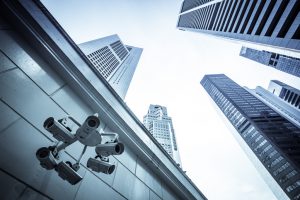
Corporate physical security strategy often takes a backseat to cybersecurity plans, and this is a mistake. Corporate physical security is your enterprise’s first line of defense for all breaches, even cyber ones. Countermeasures should manage not just who enters your building, but where they go once they get inside. This is especially important, considering breaches from unauthorized access from inside corporations is estimated to cost more than $400 billion annually. By taking your corporation’s physical infrastructure and existing resources into account, you can automate common security processes to create 24/7 protection.
Why a Corporate Physical Security Strategy Can Fail
A corporate physical security strategy must be dynamic, working consistently under ever-changing conditions. New threats emerge and require updated countermeasures. However, most corporations treat their security as a static system which only requires occasional maintenance. This leads to:
- Information silos. Information silos are a common problem in corporate security due to multiple disparate systems. One person may be responsible for the information for access control, while another is expected to handle IP cameras and the data they collect. This segmentation leads to a “fruit salad” of security devices, processes, protocols and responsible parties.
- Limited security awareness. A security awareness program is designed to guard against human error in the physical infrastructure. When employees don’t have security awareness, intruders can take advantage. In some cases, they could steal badges or network passwords, which aren’t adequately secured. Alternatively, they can tailgate their way into the building by following on the heels of someone as they use their key card.
- Unmonitored ingress/egress. Access control can manage primary entry points, but companies often overlook rarely used emergency exits, or fail to check to make sure the alarms are working. Also, traffic inside the building may be less controlled, putting restricted areas at risk.
- Overly complex plans. When trying to resolve security issues, companies may take a rip out and replace approach that changes the entire system. This over-correction can cause issues with both managing and understanding systems. Having too much security is just as bad as not having enough. When it becomes overly cumbersome to get through security protocols to work, employees find workarounds. They may ignore processes entirely, and leave doors unlocked or networks logged on. Complexity can breed complacency with cutting corners, inevitably giving access to breaches. that leads to breaches.
You’ll need to start with a full inventory of existing devices, protocols and software. Inventories are critical as it’s not just cost-effective to integrate existing security devices; it’s also a best practice.
Best Practices for a Corporate Physical Security Strategy
Priorities in the security plan need to be set to ensure effective countermeasures. One of the biggest concerns should be controlling foot traffic throughout your building. By limiting access, you can better pinpoint risks in your security infrastructure and guard against them. After establishing priorities, you should work with security officers and outside consultants to:
- Build a blueprint. Mapping out the whole security infrastructure before making any significant changes will result in a better plan. It’s also critical for designing and supporting the integration step.
- Integrate systems. An integrated design helps systems work cohesively, so one program supports the next. Access control and surveillance can connect to create a solution for managing and monitoring in-building foot traffic. Magnetic locks and alarms eliminate issues with tailgating by ensuring the door closes quickly after every entry. Every system should speak to the next for full building coverage.
- Communicate changes. All key stakeholders should note their roles when it comes to each part of the system. These individuals can delegate points of contact on access control, surveillance systems, database management, and all other programs. They should be educated on their responsibilities as well as the devices in their part of the infrastructure.
- Create a dynamic installation schedule: Threats change and security needs updates to manage them. A dynamic update scheduled allows you to keep systems current while controlling costs. It also lets you take advantage of innovations as they hit the market, like biometric ID management, mobile credentials, and IP video devices.
A corporate physical security strategy should allow you to better allocate resources and personnel by automating security processes. With a unified system like SiteOwl, it’s easier to manage maintenance and device replacement needs as well. The support of an expert integrator can ensure your security program provides the 24/7 protection needed to safeguard personnel and manage assets.

